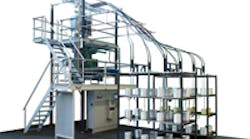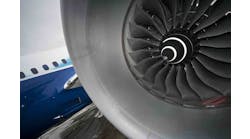MAG Develops Fiber Cutting Process for Composite Manufacturing
The FiberCut Unit “doses” various types of fiber on a continuous basis into a cutting module, then deposits them for producing sheet or bulk composite products.
Cutting machine builder MAG has developed a fiber-cutting and -dosing process for manufacturers of composite material products. The group’s new FiberCut Unit implements its own innovations in the technology for cutting technical fibers used in manufacturing sheet molding compounds (SMC) and bulk molding compounds (BMC), or fiber-reinforced thermoplastics. It claims the technology can improve the quality of the fiber material, thereby improving the compound material, so component production is more efficient and flexible.
Composite materials are critical for components supplied to aerospace, automotive and truck, heavy equipment, oil-and-gas, rail, solar energy, wind turbines, and general machining markets.
Additional advantages are found with the developed cutting processes and process technologies applied in the new fiber cutting and dosing unit.
MAG developed the FiberCut Unit specifically for processing difficult-to-cut fiber types, for example glass, carbon, polyester, aramid, or natural fibers. The continuous strands are supplied to a patent-pending cutting module by two feeding units that can be operated at different velocities. The modular cutting unit has two or more spindle modules, allowing four cuts per rotation and module. Once the cutting process is complete, the fibers fall to a velocity-controlled conveyor belt. There, they form a defined, homogenous spread pattern — a fiber mat.
Other possible applications include direct cutting and dosing of fibers into a BMC or an injection-molding process. MAG indicates its new development can cut and dose various fiber types and lengths simultaneously, depending on the fiber-feed rate and the spindle speed (which can be adjusted individually.) It’s also possible to control individual fiber distribution, and the machine’s modular design provides a wide distribution of fibers.
The system’s cutting head module has two cutting blades, to improve productivity.
Operators may monitor the fiber cutting process online, and the PC-based control system is simple to master from a touch-screen panel.






